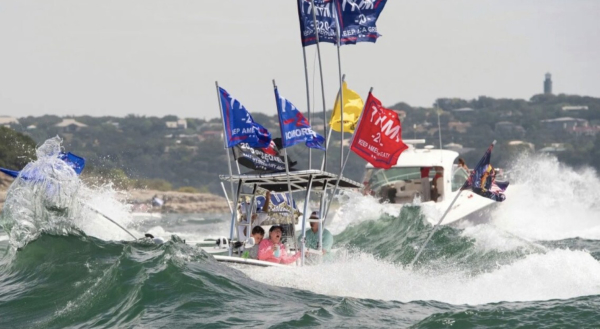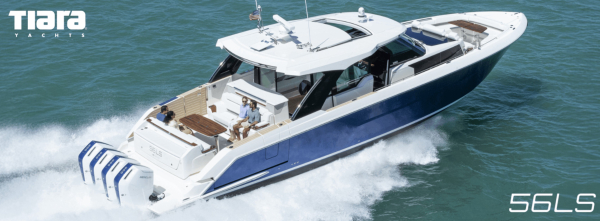
Hopefully, it ain’t as bad as it sounds.
While the revolutionary tariff program being put in place this week on practically every nation that trades with the U.S. has scared the bejeesus out of the stock market as well as the boating and fishing biz, the enormous levies proposed for practically everything that comes from outside U.S. borders won’t actually translate to price jumps anywhere near the full monty.
This is to say, a $200-baitcasting reel made in Japan is not automatically going to jump to $248 due to the 24% tariff on that nation. More significantly, it won’t mean a $45,000 Yamaha XTO outboard goes to $55,800 overnight.
The tariffs are based on the declared value, which would at most be the wholesale price of any imported products. The wholesale value of outboards can be anywhere from 15 to 30 percent less than the retail price. So, while it’s still going to be a big bump, it’s not quite so bad as it looks.
Of course, made in America Mercury outboards may see a competitive advantage over rivals Yamaha, Suzuki and Honda as a result.
Mercury Marine May Benefit

Mercury may have to pay duty on imported aluminum and steel they use as raw materials but the actual cost of those is a very minimal part of the cost of an outboard. For a 200 hp model, the cost of aluminum and steel is projected to increase only about $188 more, or less than 1% of the engine’s $20,260 MSRP. And this is only if 100% of the metal used was imported -- a worst-case scenario.
The U.S. is estimated to have around 110 billion tons of iron ore resources, and if importing steel gets more expensive due to tariffs, that ore will be a much more attractive purchase for U.S. manufacturers including Mercury. Aluminum ore or bauxite, on the other hand, is not abundant anywhere in the U.S.—most is imported, by far.
While this is sure to be a lot higher than previously, when the duty for most motorboats and sailboats: 1.5% outboard motorboats: 1% Inflatable boats: 2.4% and zip for canoes and kayaks, for example, it won’t be against the full retail price.
And, in fact, it’s highly likely (hopefully) that Donald Trump, in his usual bull-in-the-china-shop style, is mostly using the enormous levies as a starting point so that he can do what he loves doing, making deals.
If the enormous gamble works, and it’s by no means a sure thing, the U.S. will have a much better international trade situation and hopefully the stock market and associated economics will soon go back to something like normal.
Some have speculated that Trump’s economic advisors know that the tariffs will cause stock market pain for the near future—but that may cause money to flee the market and inflation to halt, which then will allow for lower interest rates all around. Maybe a good thing for some facets like the housing market.
And within 3 to 4 years, the gamble may pay off in terms of “re-shoring” a lot of American industry, which had gone overseas due to the much lower labor costs over the last 30 years or so. (There are almost no fishing reels actually manufactured in the U.S. today, for example, with the exception of a few semi-custom fly reels and Avet blue water reels. Penn reels are assembled in the U.S. but most parts come from overseas. Over 80 percent of U.S. tackle at large comes from the Far East.)
Mercury is the only U.S. builder of outboard motors, and it has most of its smaller motors built overseas as well. Even fiberglass boat builders have been fleeing to Mexico within the last decade—though that’s in part because they can’t get U.S. workers to do the hot, messy, smelly jobs required to produce FRP hulls here.)
Most U.S. Boats Stay in U.S.

“The United States is home to the world’s largest recreational boating market — and we’re proud to be an American-made industry, with 95 per cent of boats sold here built here,” says Frank Hugelmeyer, president and CEO of the NMMA. Though some costs (electronics, for example) are bound to rise, the impact on boats may not be huge.
Not many boats are imported into the U.S. except a few smaller brands from Canada, and of late some lux-class yachts from Brazil, South Africa and Australia. Buyers of the latter are in a class where a few hundreds of thousands of dollars here or there may not make much difference on whether or not they buy.
And the U.S. sends very few boats overseas, though Mercury does have a huge overseas market.
Capitalism works because company founders take enormous financial risks in hopes of large financial rewards. Often the risks don’t pan out and they go bankrupt, but sometimes they hit the jackpot. The system is not aimed at employing the most workers possible at the highest wages possible, which is sort of the socialist/communist model that has never worked anywhere it has been tried. (China has a communist government and lays a heavy hand on industry, but is in large part capitalist.)
One industry that is loving the tariff idea is the commercial shrimp and fish biz, which is grossly undercut by the prices of imported seafood. Even though fresh gulf shrimp taste noticeably better than imported domestic shrimp, they’re a tough sell because the shrimpers and thus the fish markets and restaurants have to price them at considerably more. The tariffs might level the playing field—but of course that will also mean we all pay more for seafood.
In any case, as the Prez is fond of saying, “we’ll see what happens”, for better or worse, in the weeks ahead.
— Frank Sargeant
Frankmako1@gmail.com